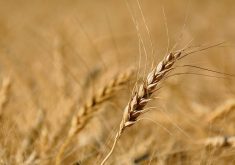CNS Canada — Many crops have felt the effects of excess moisture and a late, cool spring this year — and even the crops that already grow in water have been impacted.
Weather conditions have been tough on this year’s wild rice crops, according to an industry participant.
“What we’re hearing right now in northwestern Ontario is (that the) high water and the cool spring is inhibiting the harvest,” said Murray Ratuski, president of Floating Leaf Fine Foods, which operates the Shoal Lake Wild Rice processing facility. The company covers wild rice crops in Saskatchewan, Manitoba and northwestern Ontario.
Read Also

Senft to step down as CEO of Seeds Canada
Barry Senft, the founding CEO of the five-year-old Seeds Canada organization is stepping down as of January 2026.
“(In) Manitoba, we’re just waiting to see how things look. In the inland lakes there are reports that it looks like it’s going to be an average crop where water levels have been fluctuating on the river systems because of the high water, rain and lots of runoff this year.”
Wild rice, which grows in shallow water in lakes, rivers and streams, stands upright and above the water surface as it progresses through the season. High water levels can make it difficult for the crop to stand up.
“A lot of the plants didn’t get the chance to break the water or to come up through the water, so they’re basically drowned,” said Ratuski. “And (for the) ones that did, it’s going to be a slower and later season because of the cooler spring. The rice needs a warmer spring.”
“No way to tell”
Crops are doing a little better now that the temperatures are warming up, he added, but it will still be a below-average harvest.
“Saskatchewan has the same thing with the high water,” added Ratuski. “They’ve got some inland lakes and river systems that are looking good around the shore, but high water, a lot of runoff, rain and a cool spring makes it look like it’s going to be another lean year.”
Harvest won’t begin for another two to three weeks, he said, depending on how the crop progresses.
“Last year’s crop was about the same as this year,” he said. “We’re down, I think, about 40 per cent from an average year for as far as Canadian production goes. So we’re certainly looking at another lean year. (There is) no way to tell, but it’s not going to be an average year that’s for sure.”
Prices are up right now with the low supply and high demand, he said.
“Most of the demand for wild rice in Canada is pretty steady and consistent and same with the U.S.,” said Ratuski. “But the growth is in Europe and Asia — Japan, China, Hong Kong, et cetera.”
— Marney Blunt writes for Commodity News Service Canada, a Winnipeg company specializing in grain and commodity market reporting.
















